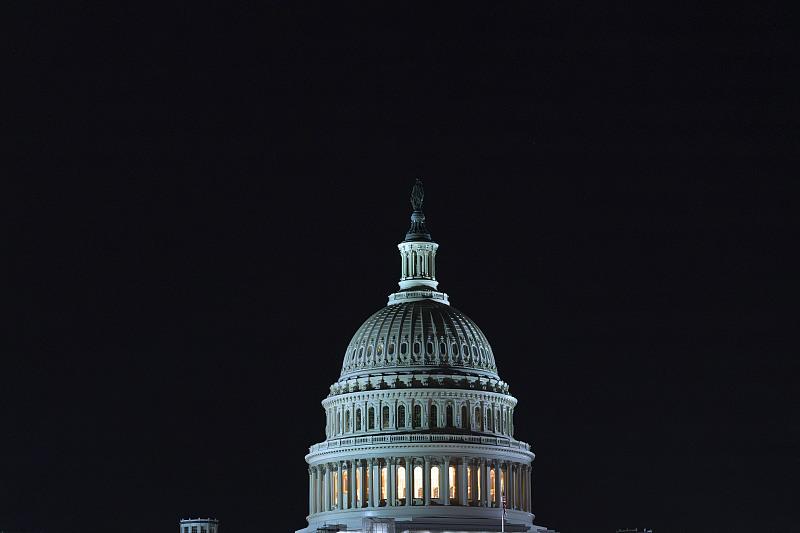
The U.S. Capitol dome is seen in Washington, the United States, on May 23, 2023. [Photo/VCG]
The U.S. Congress is refusing to allow the U.S. government to pay for necessary government services like national defense, highway construction, healthcare, and staff salaries. The debt ceiling is a pointless mechanism created by Congress in 1939 that doesn't constrain spending but does make the U.S. government teeter chaotically on the brink of default every so often.
American government expenditures hit the debt ceiling earlier this year, and the Treasury says that in June, it will no longer be able to pay for government spending already authorized by Congress. Congress is responsible for approving all spending, and the president cannot spend money by himself. U.S. legislators in Congress have already ordered the government to spend this money on projects to benefit themselves but they are refusing to take responsibility for the increased debt they are creating.
They want to brag to voters that they support useful projects but also tell voters they oppose debt. They're like the man who wants to eat all the cakes at the bakery without getting fat.
But Congress has increased the debt ceiling before when Republican presidents like Donald Trump and others were in the White House. The main reason they are refusing to do so now is because the lower house of Congress has a Republican majority, and President Biden is a Democrat.
The Republicans want to play political games with the debt ceiling. They either want the U.S. to default, in which case they can blame Biden for the economic calamity that would follow, or they want Biden to be forced to cut spending on popular social welfare programs in exchange for raising the debt ceiling, which would also make Biden look bad.
Republican President Trump increased the national debt by $8 trillion while he was in office, and the Republicans in Congress voted to increase the debt ceiling every time the debt hit the limit during Trump's reign. So they don't really care about limiting the debt. They are just pretending now because the opposite party is in office.
It is questionable how much of a problem the United States’ national debt really is in the long term. The debt-to-GDP level reached 98%, the highest level since World War II, in 2020, which, again, was during Trump's reign. It had been rising steeply during George W. Bush's and Barack Obama's presidencies, too. The last time the U.S. debt-to-GDP level declined was during the presidency of Democrat Bill Clinton.
According to a 2022 working paper by the IMF, "We find that the impact of an unanticipated increase in public debt on the real GDP level is generally negative and varies depending on other fundamental characteristics." It is most negative for countries that already have high national debt. That could mean the United States.
But refusing to pay for the debt that has already been accrued will not solve the debt problem. There needs to be a long-term solution to cut spending and increase revenue gradually in the future. Abrupt changes will throttle the economy.
The refusal by Congress to allow the U.S. to pay its bills is the biggest threat to the U.S. paying its bills. In 2011, Standard & Poor downgraded America's credit rating because the Republicans in Congress then tried to block the debt ceiling increase when Obama was president. "The statutory debt ceiling and the threat of default have become political bargaining chips in the debate over fiscal policy," S&P wrote in a report. Moody's has also sounded the alarm. They said, "The debt ceiling creates a high level of uncertainty."
Republican leaders in Congress have a nihilistic thirst for power. They don't care if threatening to default will hurt the economy. They don't have any vision beyond waging war with Democrats. They'll burn the U.S. economy to the ground if it means burning Biden.





